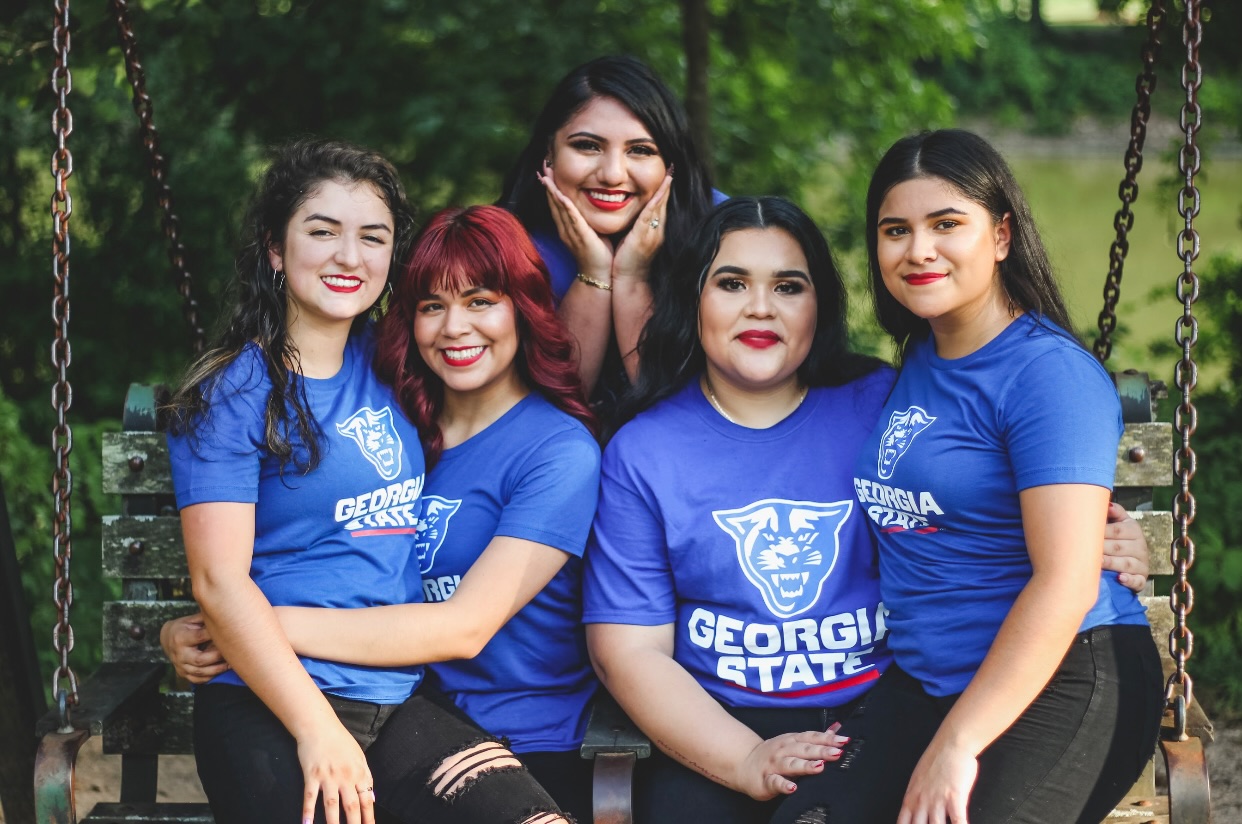
From Latin music and fine art to space exploration and inspiring activism, the Hispanic/Latinx community’s contributions are countless.
Every year, Hispanic/Latinx Heritage Month is celebrated from Sept. 15 to Oct. 15, recognizing the community’s culture and contributions.
In celebration of the history, culture and legacy of this month, the Georgia State Hispanic/Latinx community shared their thoughts and experiences.
Sophomore Isabella Caraballo is proud of her Puerto Rican and Guatemalan heritage despite sometimes having difficulties connecting to it.
“I find it difficult to connect with a culture that a lot of parts of society try to wash away,” Caraballo said. “I think I am proud of my heritage because there are so many different people that have shaped it into the way it is, and it allows me to connect to more people in language as well as tradition.”
Children of immigrants sometimes struggle to maintain fluency in their mother tongue. Many were never taught their parent’s language or had to adapt quickly and learn English. As a result, they lose touch with an aspect of their native culture.
“My Spanish isn’t excellent, and sometimes that prohibits me from fully connecting to the people I wish I could,” she said. “Whether it’s my family or customers at work, it makes it difficult to connect.”
The culture includes music and food but also a robust familial spirit. This spirit allows for people in the community to feel connected despite the differences in nationality.
“There’s a big spirit of welcoming that comes with Latinx community,” Caraballo said. “If you enter into a Latinx house, there’s always a sense of family, which isn’t dependent on the country you’re from. Many households will greet you with wonderful food and welcoming arms.”
Sigma Lambda Upsilon or Señoritas Latinas Unidas Sorority, Inc. (SLU) is a Latina-based sorority founded in 1987 that made its way to Georgia State in 2012. The sorority embraces women of all cultures, ethnicities and backgrounds. It helps Hispanic/Latinx students connect with women from familiar cultures or who have similar college and life experiences.
Senior Andrea Gomez-Aparicio is proud of her diverse heritage because it is what makes her unique and connects her to the people she loves the most.
“My heritage is all of those who came before me — all my great-grandparents were from different parts in Colombia,” Gomez-Aparicio said. “Between native and European and anything else I might not know about, when I think of my heritage, I think of the brightest colors, folklore music and the mercados [markets] in my country.”
Heritage is a way for people to appreciate the future their ancestors paved the way for.
For senior Yajaira Escobar, heritage tells her story. Her Mexican culture is a part of her, like her fingerprint or DNA.
“It is an inheritance of the history and hard work of my ancestors and the millions of people who came before me,” she said. “Heritage is an important concept that has surrounded my life, my family’s traditions and customs have shaped my identity and how I view the world.”
The Hispanic/Latinx culture is community-oriented, which is junior Isela Suarez-Perez’s favorite aspect of being Latina.
“I cannot put into words how much my community and my people mean to me,” Suarez-Perez said. “They are simply my biggest supporters and the reasons behind why I strive to be better. Being a part of this community is both a privilege and an honor. You learn so much from those around you, and are able to teach those that come after you.”
Hispanic/Latinx heritage is a multidimensional melting pot of different languages, cultures, ethnicities and races. The overlap is what makes Hispanic/Latinx heritage so unique, but can also be a challenge.
“I think we all have different experiences, depending on our countries of origin and, unfortunately, race,” Gomez-Aparicio said. “Many Latinx people have encountered hate towards them only because of the color of their skin and their native features. Others are seen as ‘not Latinx enough’ because of the language they speak, their features and even what they enjoy to eat or listen to.”
Georgia State has a large Hispanic/Latinx community that is always willing to welcome new people. Many students can find their niche with clubs such as the Latin American Student Association, and programs such as LASSO and multicultural Greek life like SLU.
“Through SLU, I was able to obtain leadership positions and skills. It has given me empowerment and confidence, along with the chance to become more aware of my culture and its people,” Suarez-Perez said.
Junior Lily Milani believes Georgia State has done a good job making safe spaces for Hispanic/Latinx students, but there is always more to improve.
“We just need to ensure that these organizations are receiving sufficient funding and support for them and their members,” Milani said. “Each of the organizations has support from the council that they are under, but I think it is important for Georgia State to publicly support all these organizations so that their members feel recognized by their institution rather than just their peers.”
First-generation students face various obstacles navigating through school without any familiar guidance. Their backgrounds and lack of financial and academic support make many of these Hispanic/Latinx students underprepared for their college experience.
“Georgia State could focus on providing undergraduate students with academic assistance such as assigning them to mentors and tutors who come from similar backgrounds,” Milani said.
There is always something more to learn about Hispanic/Latinx heritage from the community to the food and dancing.
“Latin America is so diverse,” Gomez-Aparicio said. “We are all colors, shapes [and] forms. Our cuisine is so different and exquisite. So I’d like to challenge anyone reading this to try different plates from different countries. Ask a [Hispanic/Latinx] person you know about their favorite holidays or music from their home country.”
